How Substance 3D powered the art of Clair Obscur: Expedition 33

Playing “Clair Obscur: Expedition 33” feels like stepping into a living painting, where golden highlights shimmer against obsidian stone and Belle Époque architecture twists into fantastical dreamscapes. Behind this striking visual identity is a small studio, Sandfall Interactive, who relied on a smart pipeline powered by the Adobe Substance 3D tools to bring their creative ambitions to life.
The team created a focused library of custom smart materials such as obsidian, black marble, gold metals, and more, that became the backbone of their pipeline. With Substance 3D Painter and Designer, the art team, primarily consisting of three artists, was able to texture thousands of assets, from characters to intricate environments, with speed, precision, and consistency.
For a small studio of around 30 people, this approach made the impossible achievable and helped propel the game into one of the most talked-about RPGs and biggest hits of the year.
The artists behind “Clair Obscur: Expedition 33”
Alan Reynaud, lead character artist: I joined the studio four years ago as a character artist. I’m responsible for modeling and texturing most of the characters of “Clair Obscur: Expedition 33.”
Carla Deveze, lead environment artist: I’ve been working here for a little over four years now. I joined the studio right after finishing my studies and over the years, I’ve had the opportunity to grow and take on more responsibilities in shaping our game environments.
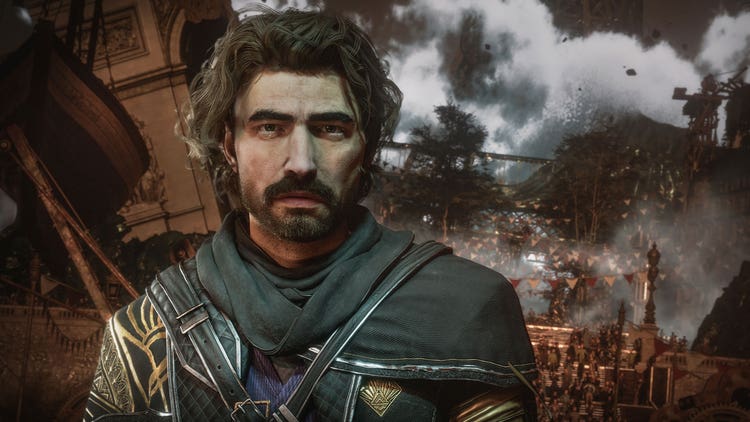
Crafting the artistic vision
Reynaud: “ Clair Obscur: Expedition 33” is a ground-breaking single player, turn-based RPG with unique real-time mechanics, making battles more immersive than ever. Players explore a fantasy world inspired by “Belle Époque” France in which they battle devastating enemies.
Deveze: The game is built around the idea of contrast, between light and shadow, hope and despair, beauty and destruction. What makes the visual style of “Clair Obscur” unique is that it combines detailed, grounded architecture and environments with imaginative, sometimes abstract elements, always with a strong focus on mood and atmosphere.
Substance 3D: An essential part of the pipeline
Reynaud: For the characters, we use ZBrush for sculpting, Marvelous Designer for character clothing, Blender for modeling and UV/Topology, Maya for rigging and grooming and, of course, Substance 3D Painter for texturing. The game runs entirely in Unreal Engine 5.
Substance 3D Painter was used for 100 percent of our characters. It was essential to production as it allows us to be super-efficient and have high-quality assets in a very user-friendly way. It also helped us shape our art direction and ensure we had a similar look across all our characters.
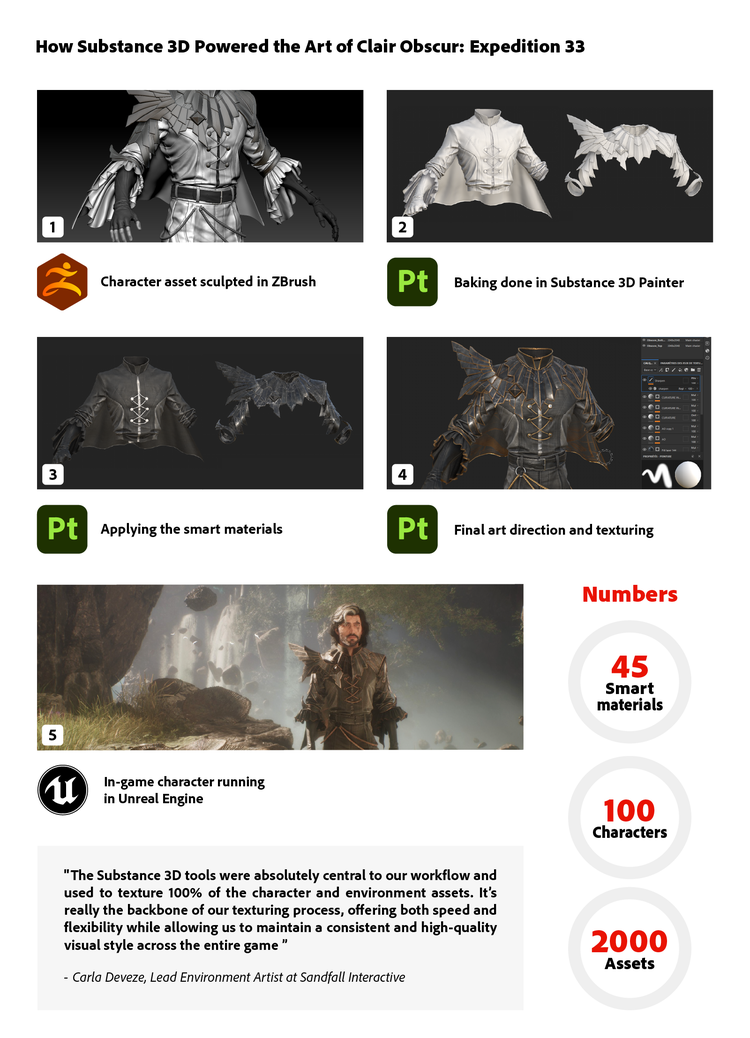
Deveze: For the environment side of the pipeline, we mainly used Blender and ZBrush for modeling.
When it comes to texturing, the Substance 3D tools were absolutely central to our workflow. 100 percent of the environment assets we created were textured using Substance 3D, primarily Substance 3D Painter (and Substance 3D Designer when we needed to create tileable or more complex materials).
It’s really the backbone of our texturing process, offering both speed and flexibility while allowing us to maintain a consistent and high-quality visual style across the entire game
Breaking down the character art process
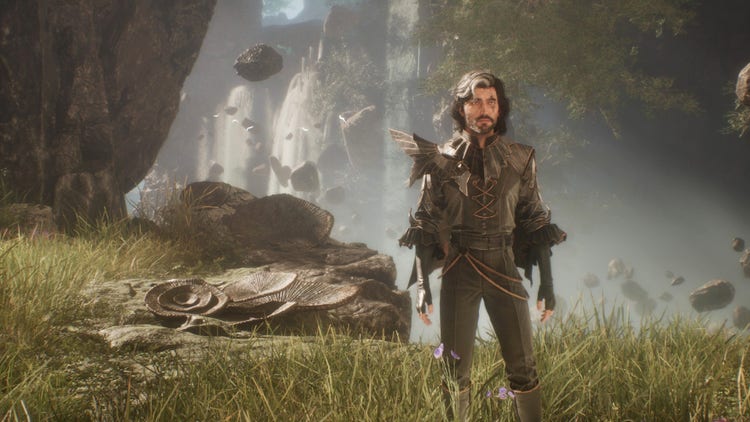
Reynaud: Here is a breakdown of my process with the Obscur suit that I made. It's a good example of my process and how I use the library of smart materials I made during production.
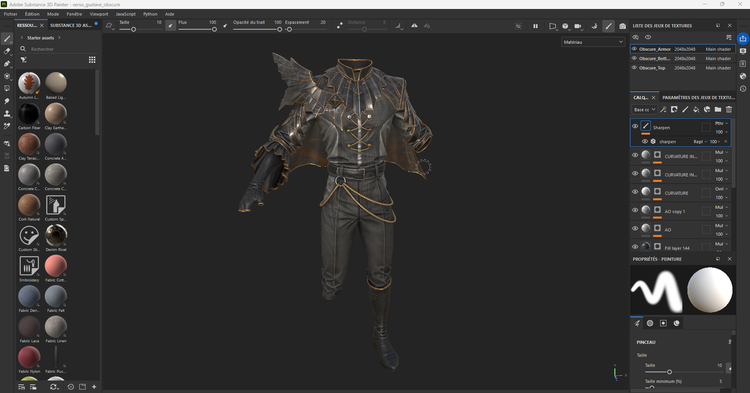
First, I would bake my characters in Substance 3D Painter. To do that, I would rename all the subtools with the suffix _high and _low to use the bake by mesh name option. This limits a lot of the artefact errors that could occur.
Also, I would separate my high-poly mesh to match the subtools I have inside one of my texture sets. For example, this character has three 2048 texture sets, one for the pants and boots, one for the armor and one for the top.
This is my process for every character:
- Make a fill layer with the name Base with a 0.75 percent white value and with a roughness of 1.
- Make a fill layer to keep the color, and a fill mask with the ambient occlusion, invert it and set the layer to multiply.
- Make another fill layer, keep the color, make a fill mask with the curvature, increase the contrast with a level and invert it, then set the layer to multiply.
- Make again another layer, keep the color but make it pure white, make a fill mask with the curvature, increase the contrast with a level and set the layer to overlay.
This gives you the result below. This is important to see the shape and spot bake errors but also increase the shape and sculpt of the character.
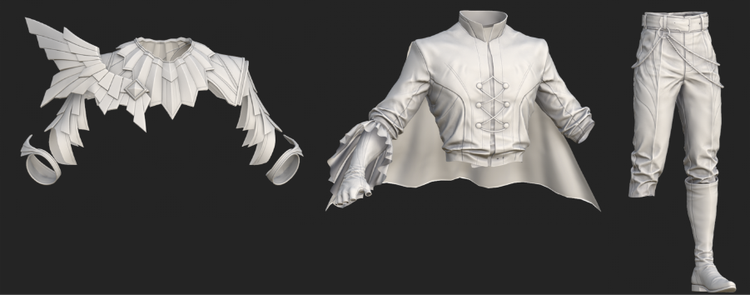
I then move on to texturing, using many of the materials I’ve built during production. I apply my custom obsidian material to the armor base, then layer a fabric material on top, and a base leather for the gloves. From there, I simply select the relevant UV areas where each material should be applied.
When creating a smart material, I make extensive use of smart masks and mesh maps so that the material can adapt to any character with minimal adjustments.
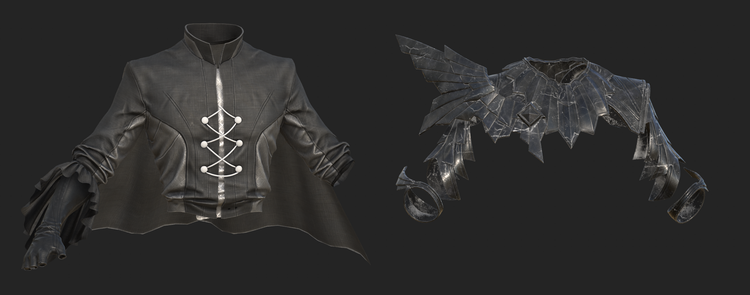
And then I would just add the rest, like the gold material that I think I used on 80 percent of my characters since it’s a core aspect of our art direction. This is an example of how I work with Substance 3D Painter and how it helps me make high-quality characters as fast as possible.
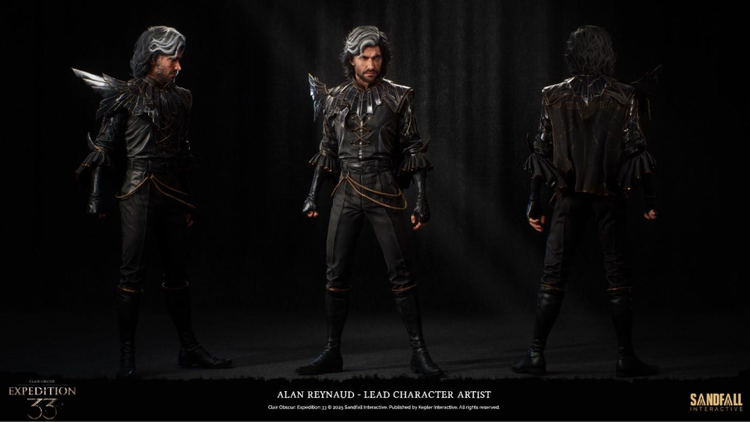
Building a custom material library
Deveze: The game’s strong artistic direction, especially the emphasis on Art Deco influences and the black-and-gold color palette, allowed us to build a focused and reusable material library. We created a set of custom smart materials early on, which we used as a base across many assets.

Black and Gold metal smart material in Substance 3D Painter
We had dedicated smart materials for obsidian, black and gold metals, black marble, dark wood, and gold paint. These materials helped maintain visual consistency while speeding up production. That said, the game also features a large variety of unique materials.
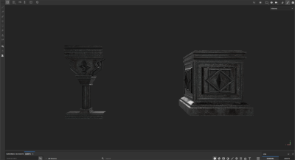
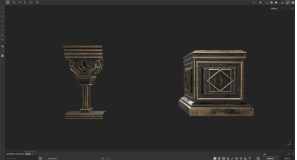
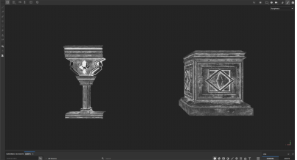
In most cases, we started from a base made of smart materials or assets from the Substance 3D Assets library, which we then heavily customized to match the style and surface details we were aiming for. This approach allowed us to add more detail and personality to each element, which was especially important to reflect the richness of the world. In Substance 3D Painter, some of our textures were created entirely from scratch.
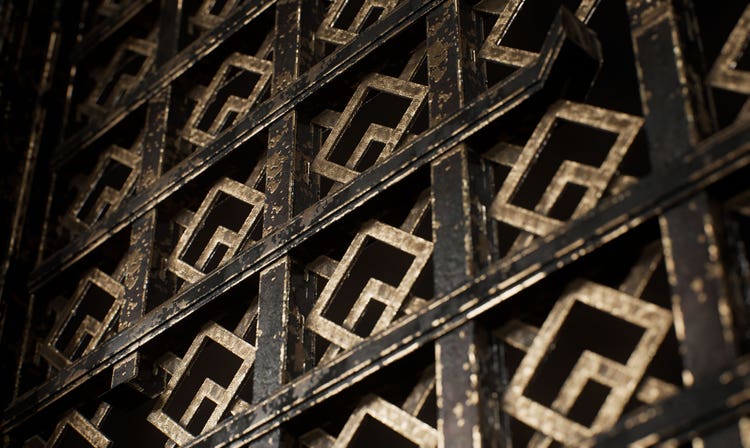
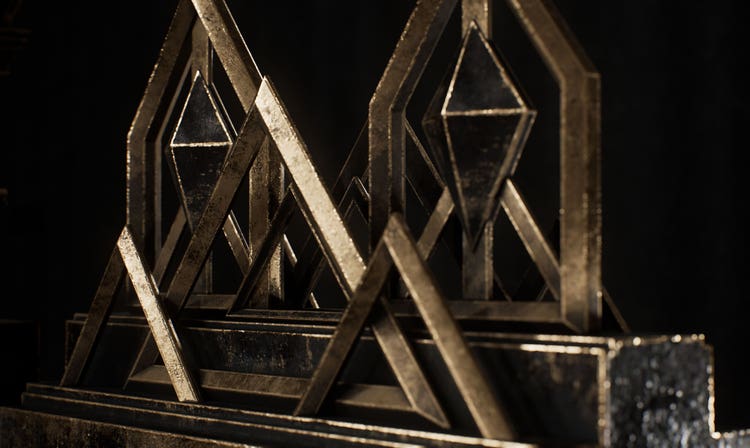
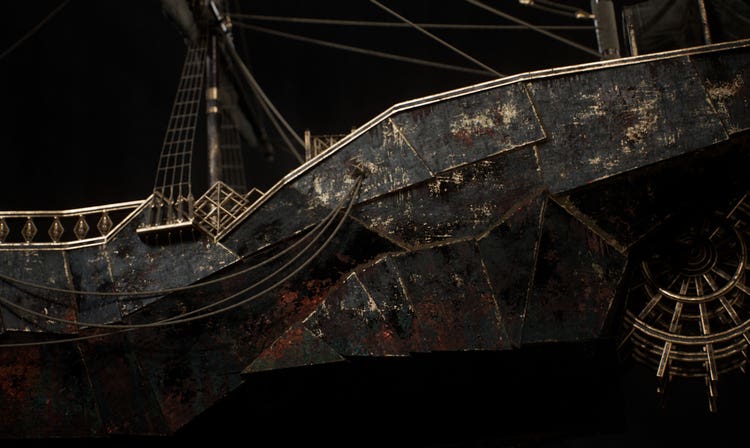
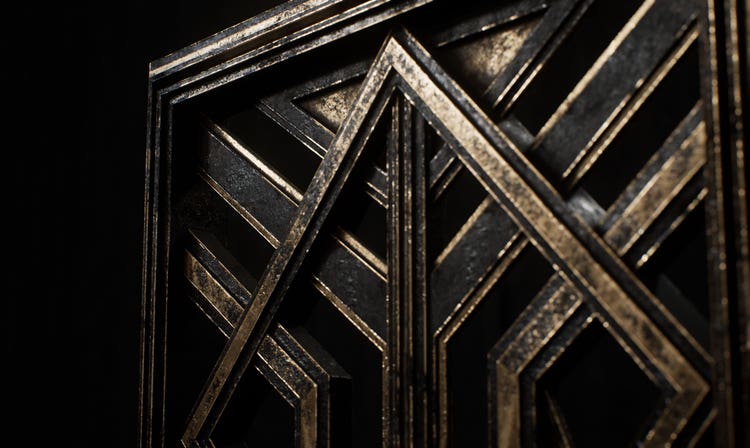

Black and Gold metal smart material used in-game.
Environment art and world-building
Deveze: Environment art played a huge role in shaping the visual identity of “ Clair Obscur”, and texturing was at the heart of that process. We wanted to avoid the flat, sometimes lifeless look of ultra-realism. Instead, we aimed to create environments that feel like living paintings.

Example of roughness.
One of the key techniques we used in Substance 3D Painter was building highly contrasted roughness maps with lots of variation. We relied heavily on smart masks to add life and storytelling into the materials, like wear, aging, or slight imperfections. Many materials were designed to evoke the feeling of oil paintings, with rich surfaces, brushstroke-like details, and strong contrast between matte and glossy areas.
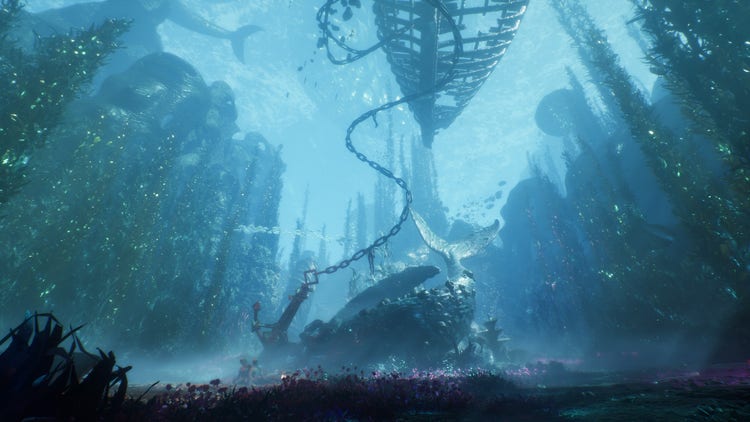
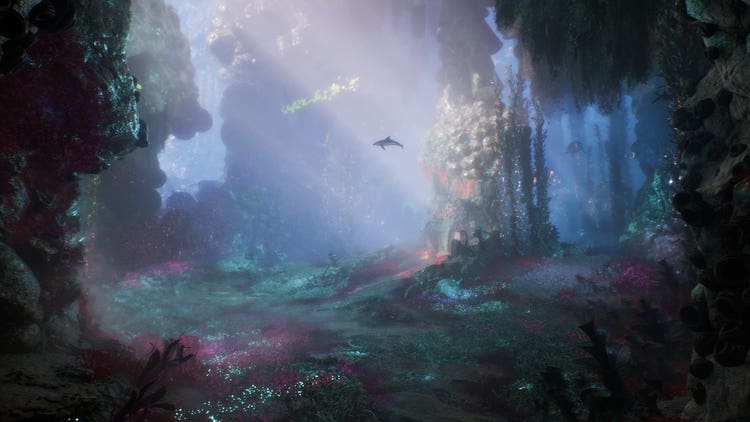
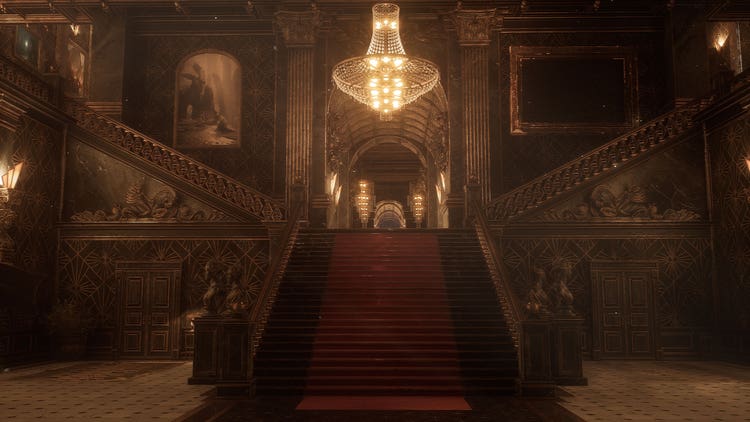
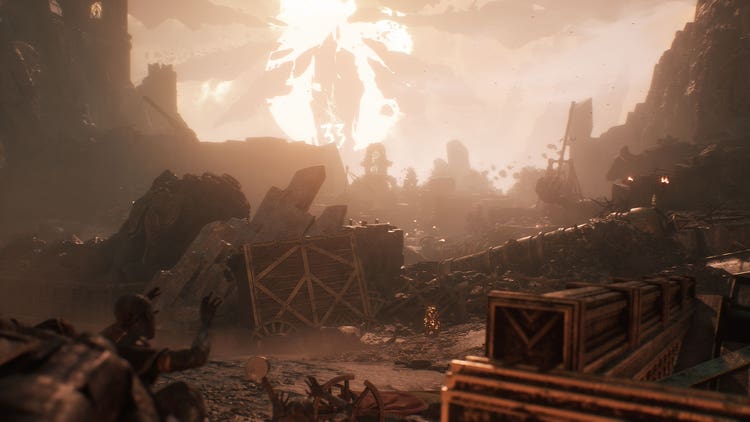
Success and critical acclaim
Deveze: The reception from the gaming community still feels totally surreal! We knew people might appreciate the game, but we never expected this level of excitement and support, especially from so many players around the world.
Reynaud: We can’t thank the players enough for the love and support they’ve been showing to the game. I knew it was a special game but wasn’t expecting the amount of hype, it’s incredible.
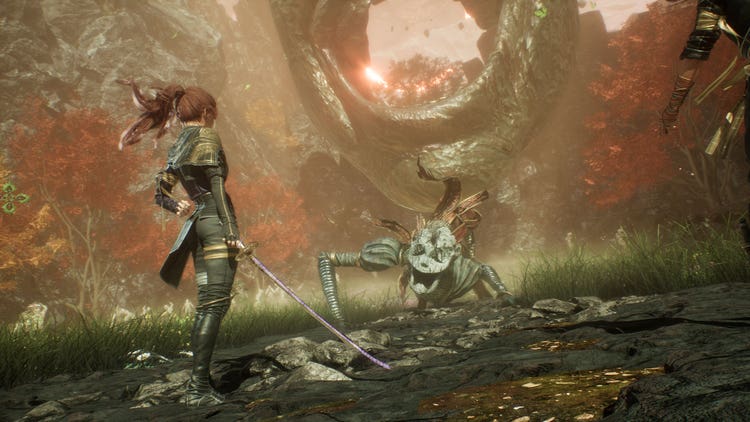
Sandfall interactive
Deveze: “Clair Obscur: Expedition 33” started as a personal project by our creative director, Guillaume Broche, back in 2020 while he was still working at Ubisoft. He began developing the idea on his own and eventually reached out to two of his friends to help turn it into a real game studio. Alan and I joined the project very early on; at the time, the team was fewer than 10 people.
The studio is based in Montpellier, France, and has grown quite a bit since then (close to 30 people). What’s unique about Sandfall is that over 90 percent of the team started as junior game artists and developers. For most of us, including myself, this was our very first real job in the video game industry, aside from a few internships. So “Clair Obscur” has truly been our first full production, and we’ve learned and grown a lot together throughout the process.
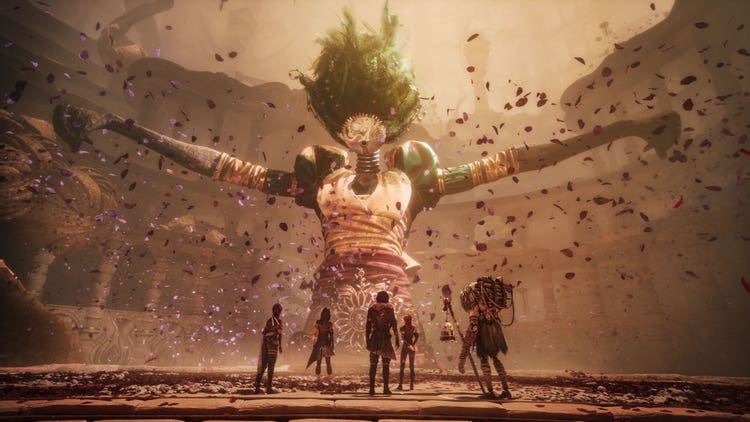
Small team, big results
We didn’t have team members dedicated solely to texturing, so everyone who created 3D models also handled their own texturing. In total, about five or six artists contributed to texturing at different stages, but for most of the production, it was mainly just three of us managing all the textures.
The Substance 3D tools were absolutely essential in making that possible. Their ease of use and flexibility allowed us to move quickly without sacrificing quality. Creating our own smart materials was especially helpful: we were able to build a library of reusable materials that matched our artistic direction and helped us texture hundreds, if not thousands, of assets efficiently.